Walleye rigs differ depending on the time of year and where the fish are beginning to congregate. Blade baits, jerk baits, swimbaits, and crankbaits are always good choices no matter what time of year. Some anglers also choose live bait like minnows or nightcrawlers. Blade baits work all year long but are particularly effective in the Fall.
Fall is one of the most popular times of the year to chase walleye. As the water temperature drops, schools of walleye will leave their deep summer holes and roam the shallows searching for prey. During this time, bait fish and perch begin to school up which make easy meals for walleye. “Matching the hatch” will help you find success and one of the most effective techniques to use to mimic bait fish is fishing blade baits.
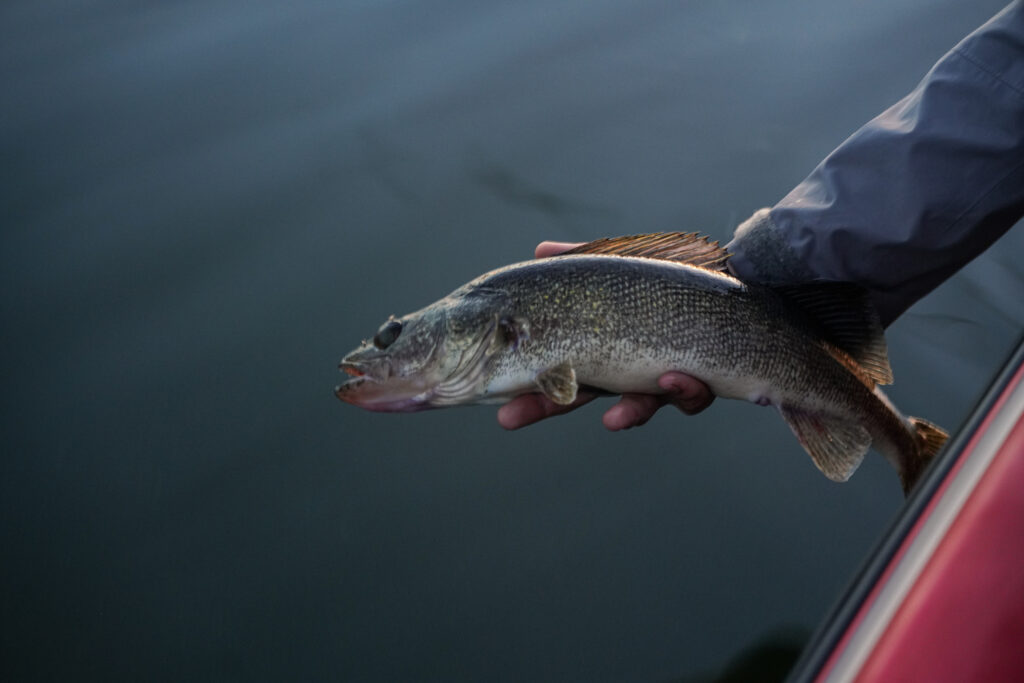
Blade Baits for Walleye
Blade baits are a highly effective search bait when trying to locate roaming schools and wolf packs of walleye in the fall. You can cover a lot of water with them and keep them in the strike zone the whole cast. They also mimic the prey that the walleye feed on but proper bait selection is key. Size and color are two of the biggest factors when selecting the proper blade bait.
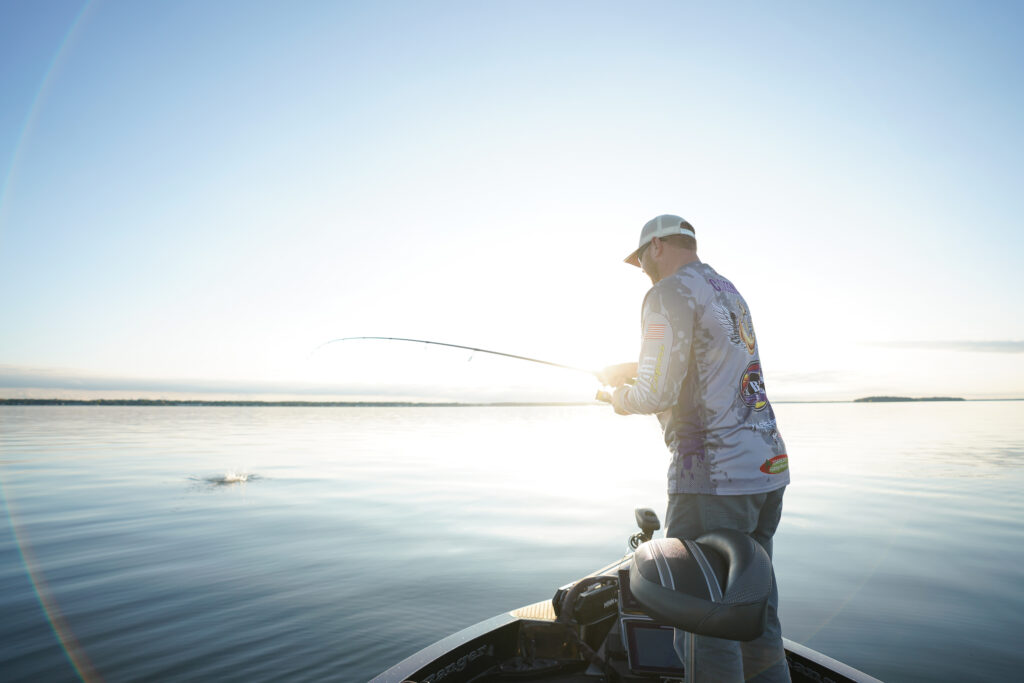
What Size and Color Blade Bait for Walleye?
Walleye primarily feed on bait fish and will sometimes key in on a specific type and size of bait fish. Matching the hatch is critical when this happens because if your lure does not look like the bait they are feeding on, you won’t have as much success.
Deciding on what size blade bait to throw depends on a few different factors such as current, wind, depth, and size of bait fish. Generally, anglers will increase the size of the blade bait as the current, wind, and depth increase. When fishing in 0-25 ft of water, a half oz blade bait is a safe bet.
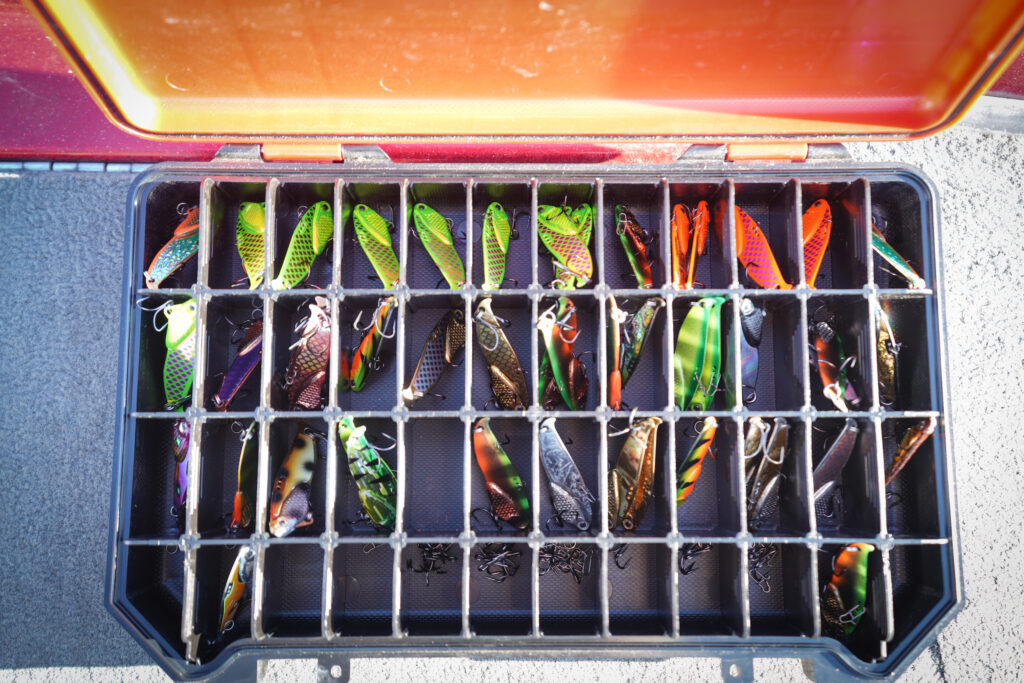
How to Fish a Blade Bait for Walleye
The start of blade bait fishing usually begins around finding bait fish and the appropriate structure. Rock humps surrounded by drop offs and steep contours are generally a great starting point. Blade baits are a terrific way to break down and cover water.
- When casting, make sure to stop your line right as your bait is about to hit the water. This allows the blade to right itself as it sinks down to its destination. Stopping the line can also prevent the line from tangling in the treble hooks.
- When retrieving, make quick “hookset” like motions to bounce the blade about 1-2 feet off bottom. This motion attracts the attention of walleye out of the strike zone to investigate.
- Play around with the speed of the retrieve and severity of the “hookset” motion. Fish may be more or less aggressive depending on the day and conditions.
- It’s important to have good line management while retrieving because a lot of strikes can happen on the fall of the blade. So, pay attention.
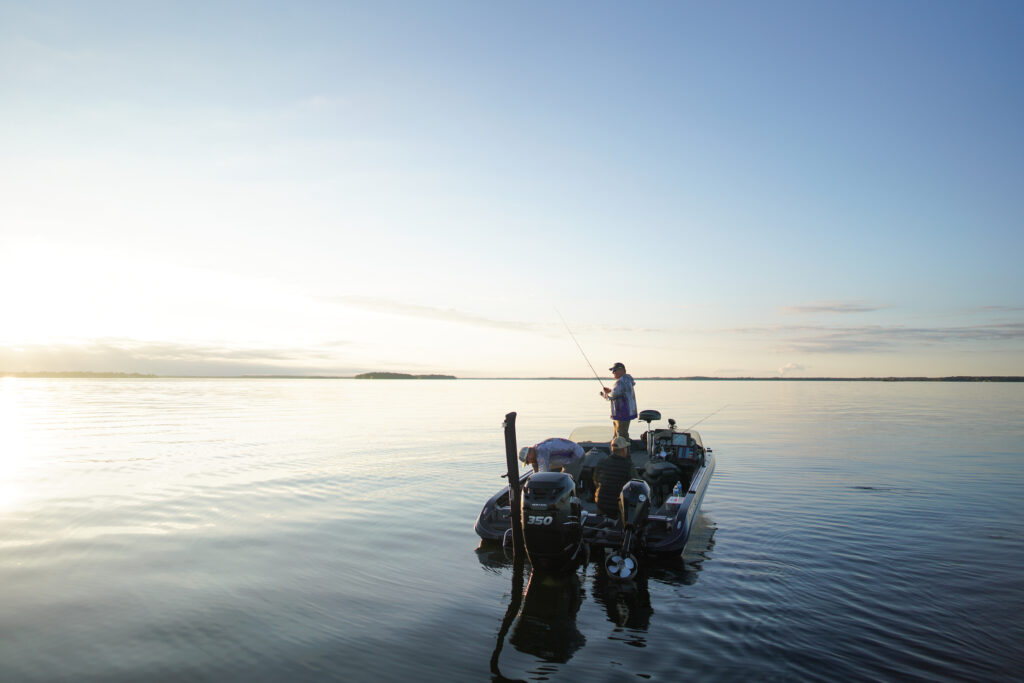
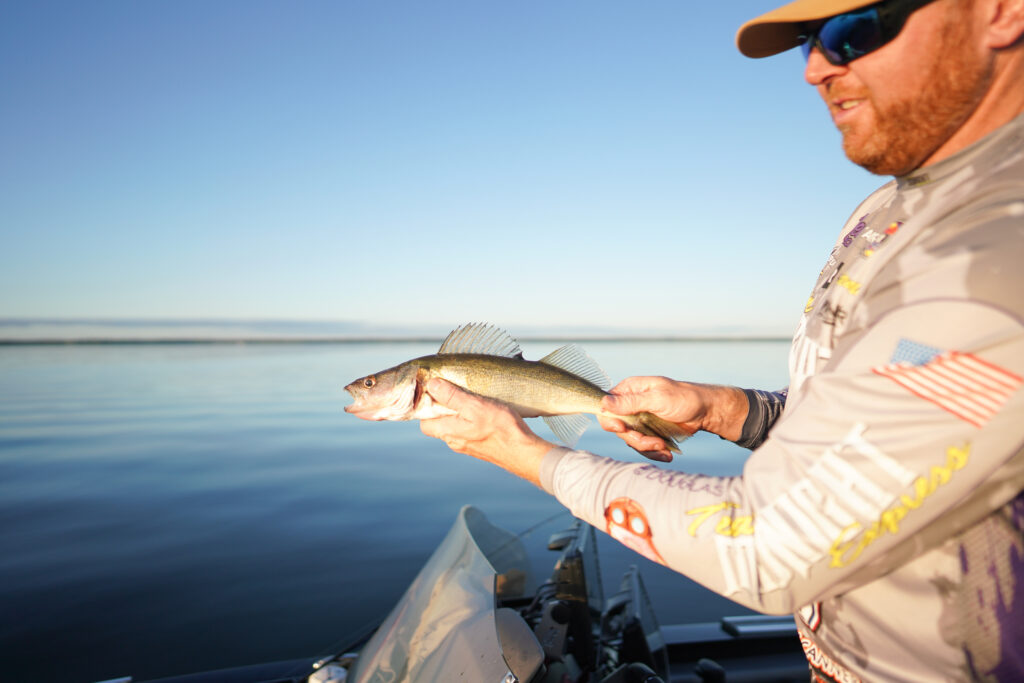
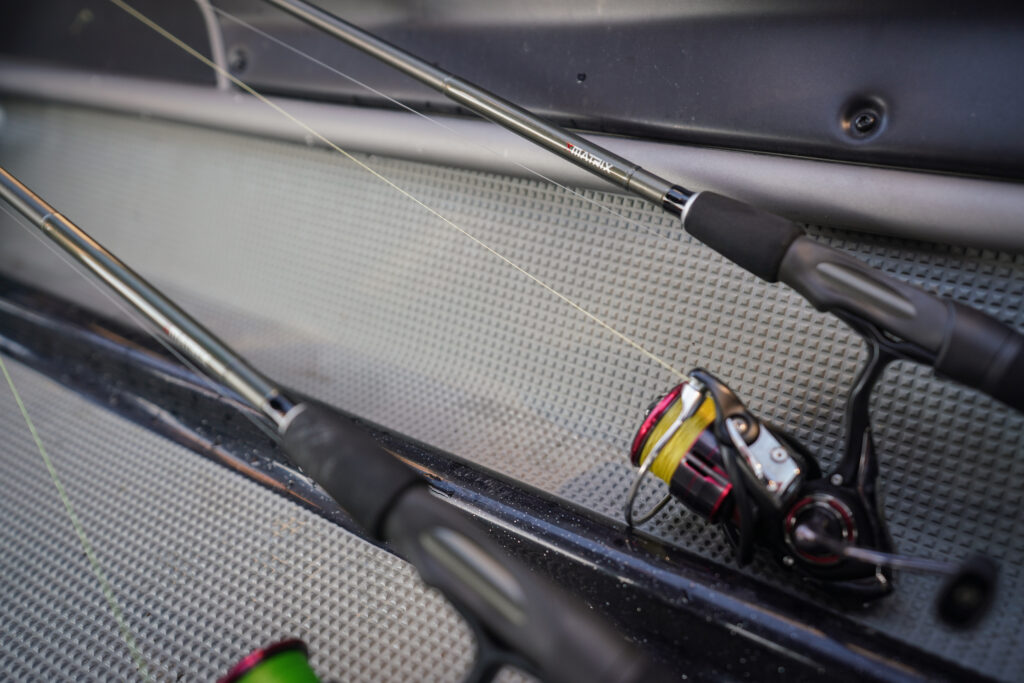
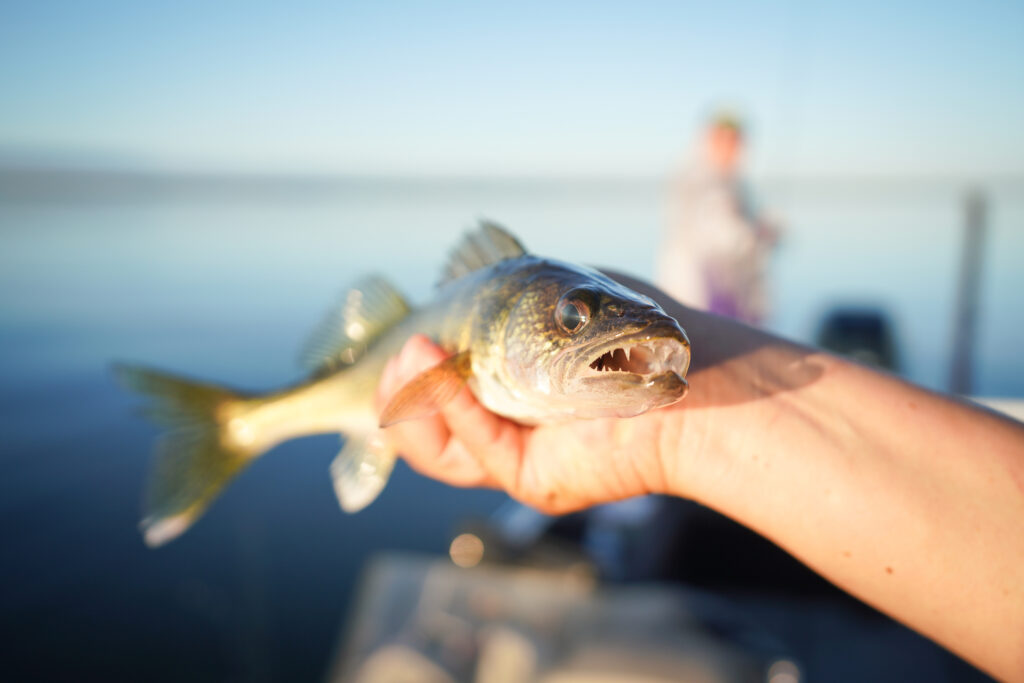
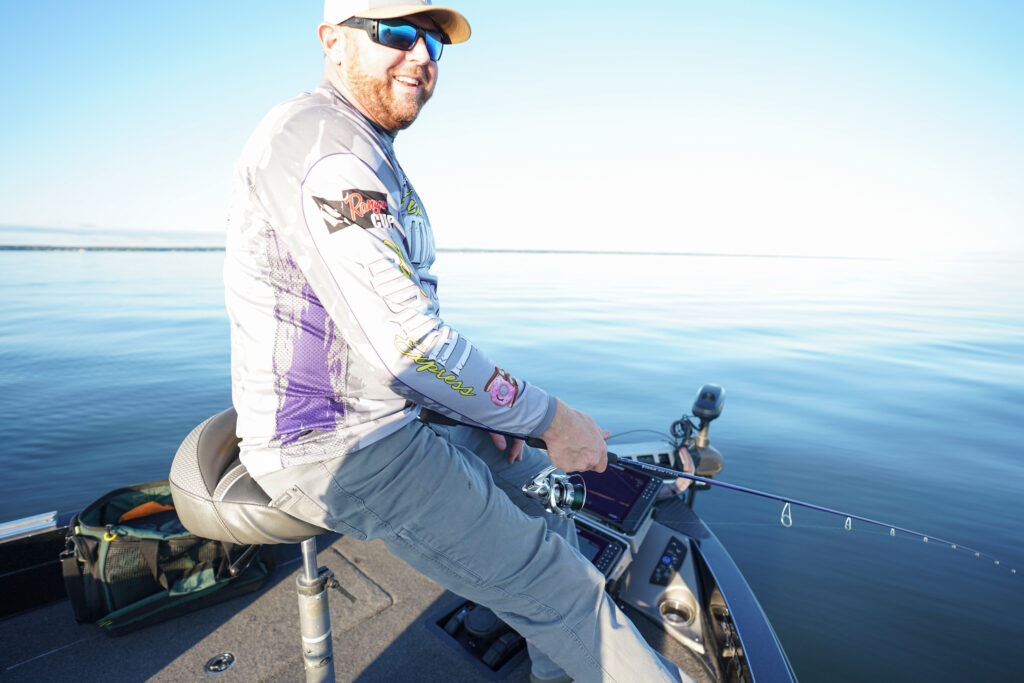

The Best Walleye Rod
The best walleye rods are:
- Sensitive: Sensitivity is important not only for feeling the vibration of the blade jig but making sure you can feel the bite on the fall. Sensitivity creates an accurate and strong connection from the bait to the rod that helps you load and unload your cast properly.
- Extra Fast tip: an extra fast tip excels with pinpoint accuracy, helpful when targeting structure and methodically covering it.
- Length of 6’10” to 7’4”: rods of this length offer a perfect compromise between sensitivity and castability.
Fishing Rods for Walleye – Where to Buy Them
Douglas sells some of the best spinning rods for walleye on the market. The following spinning rods are the ones we recommend for anyone fishing for walleye:
XMatrix Series:
- DXS 683XF
- DXS 6103XF
- DXS724XF
- DXS 744XF
- DXS 763XF
To cast and purchase a Douglas rod, visit a dealer near you or visit an online dealer to have one delivered to your home.
Fish with Craig Sleeman
Craig Sleeman is a full-time guide and professional angler. If you are looking to get out on the water chasing perch, walleye, or any other freshwater species, Craig is your man! Book a day fishing with Craig.
Connect with Craig on Instagram
Additional Fishing Resources:
Perch Fishing Setup
How to Fish a Carolina Rig
How to Fish for Stripers